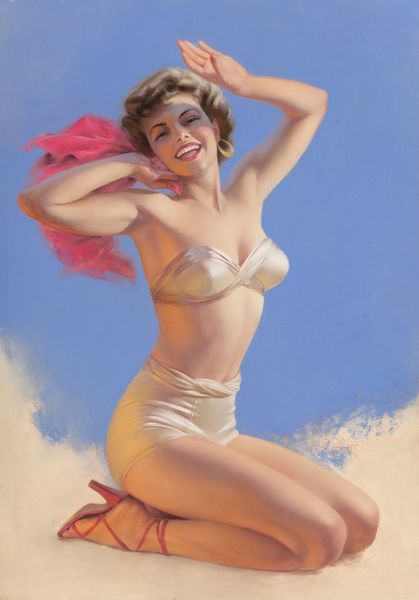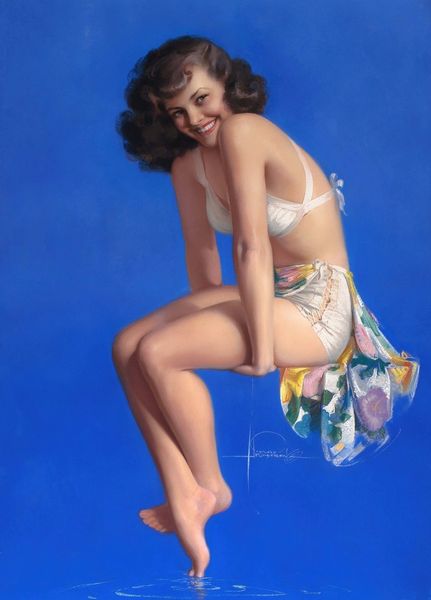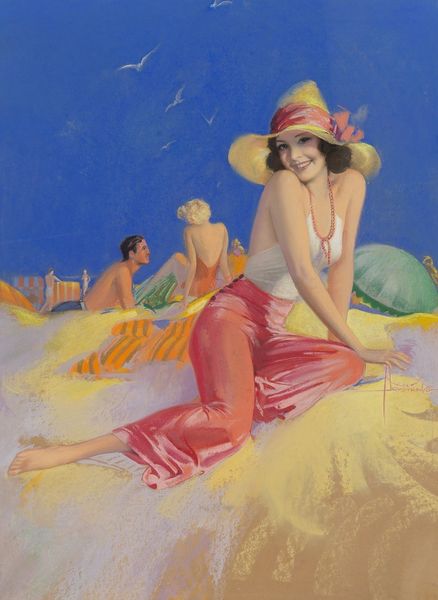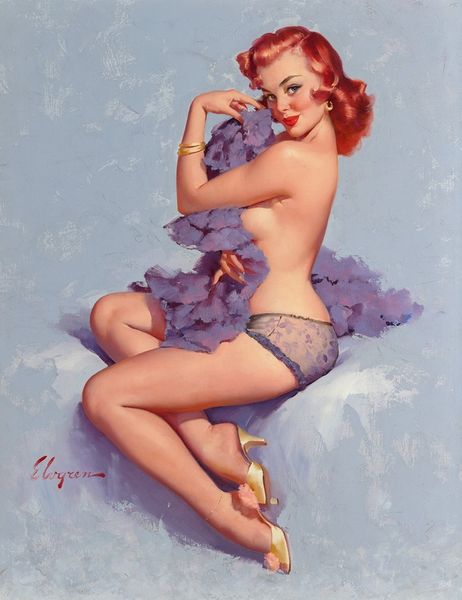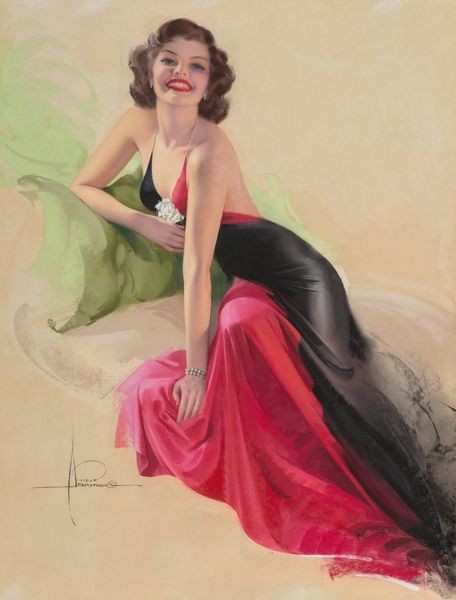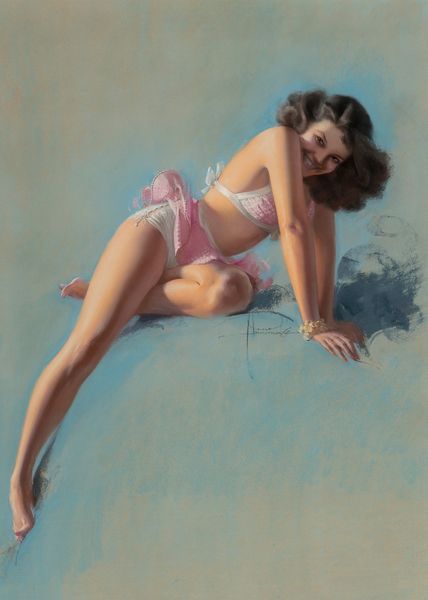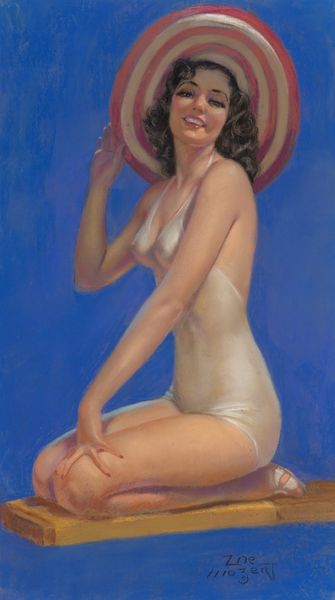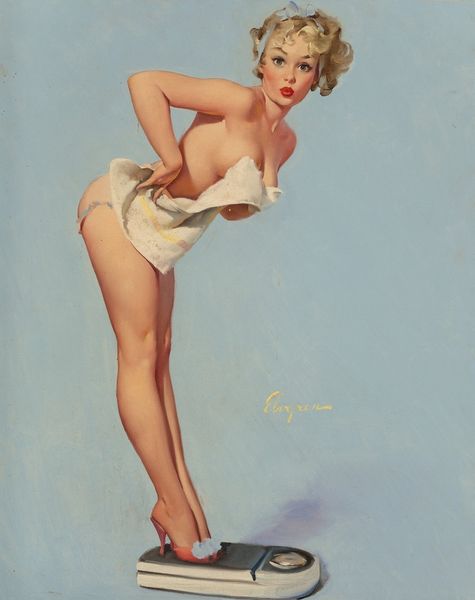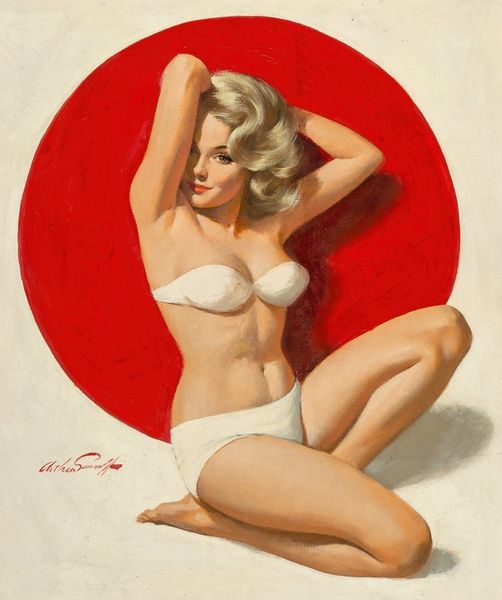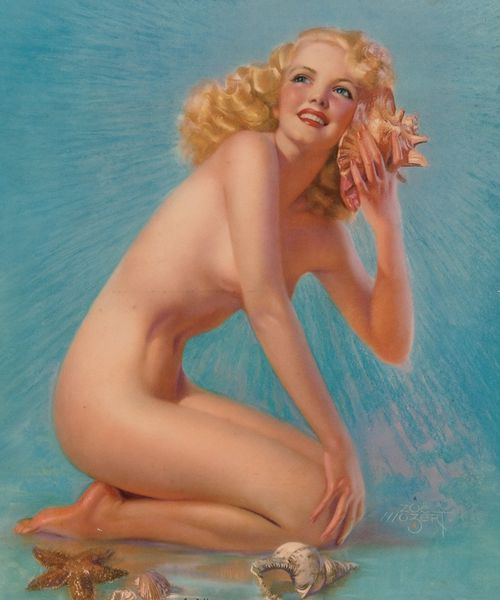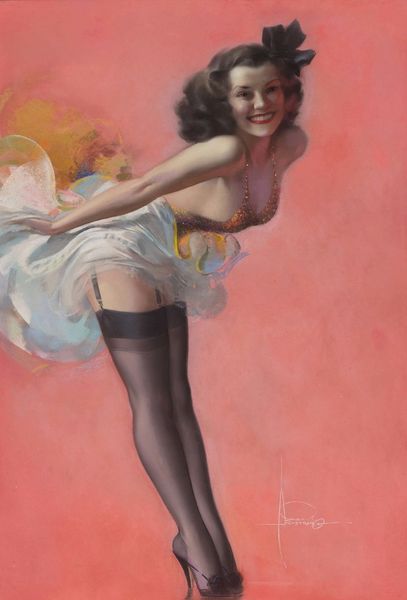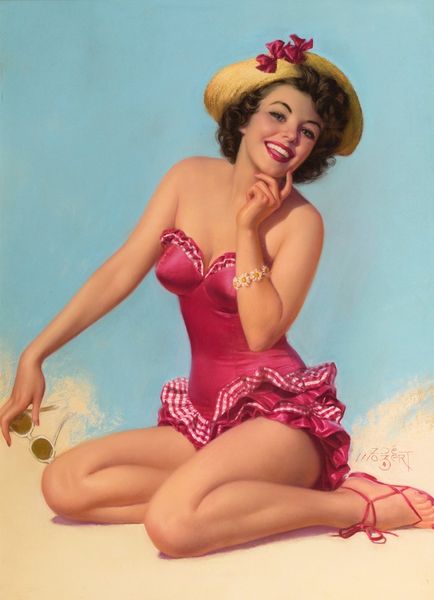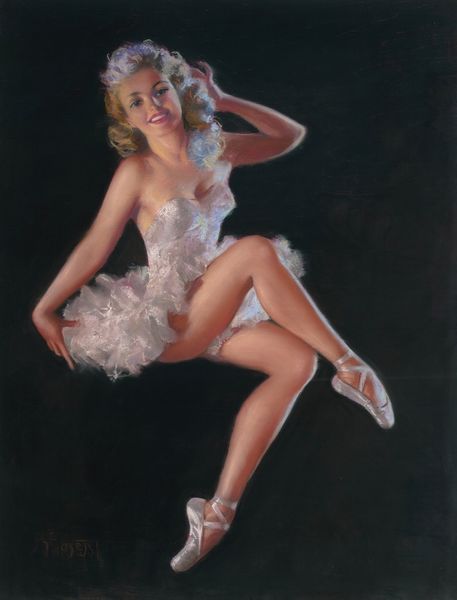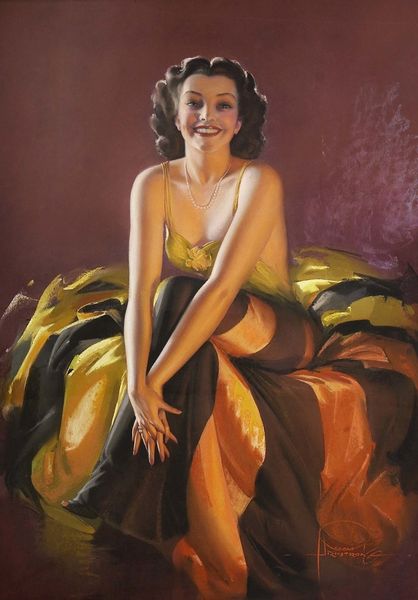
painting, plein-air, oil-paint
#
portrait
#
painting
#
plein-air
#
oil-paint
#
figuration
#
oil painting
#
genre-painting
#
portrait art
#
fine art portrait
Copyright: Modern Artists: Artvee
Curator: Looking at Rolf Armstrong's "Beach Beauty," the first thing that strikes me is its undeniably retro charm. It has such a vibrant yet dreamy quality to it, the artist’s skillful application of color and light evokes a strong feeling of nostalgia. Editor: Exactly. Consider how Armstrong worked as an illustrator. Mass reproduction of such works as calendar art raises the status and visibility of women within specific socioeconomic systems, changing conventional definitions of labor. Curator: It's oil on, presumably, canvas, although there’s something about the surface quality that almost suggests a more immediate, sketch-like support. You see Armstrong, most famous for pin-up art, creating an incredibly idealized image of feminine beauty. I’m thinking the social and historical contexts that helped catapult it to fame? Editor: Undeniably. The accessibility of images like this, printed for mass consumption, highlights changing views about women, pleasure, and the burgeoning leisure industry. What kind of labor made this image? Who worked to market it, and where? Curator: Good point! The scene itself speaks volumes, it shows a beach setting that implies a society increasingly interested in and afforded recreational travel. There is something almost performative and mannered about the figure. Editor: Indeed! Let's examine the female figure that Armstrong portrays in this fine art portrait. How does the painting and proliferation of this type of image affect the status, representation, and access of the many kinds of bodies omitted in it? Who consumes this art, and how does it circulate in public life? Curator: Yes. This image certainly carries complexities related to objectification, and standardization, even as it contributed to shaping ideas of beauty that pervaded much of 20th century popular culture. Editor: Right, by investigating how social power works through representation, by interrogating materials, labor and circulation, we find the art making a deeper mark on our world than a “simple” smile. Curator: Well said. "Beach Beauty" truly reflects evolving cultural trends of leisure and idealised beauty in the mid-20th century and leaves the audience to reckon with the artwork's legacy today. Editor: Precisely, looking beyond mere aesthetics encourages critical engagement. Thanks for guiding us on this thoughtful reflection!
Comments
No comments
Be the first to comment and join the conversation on the ultimate creative platform.
